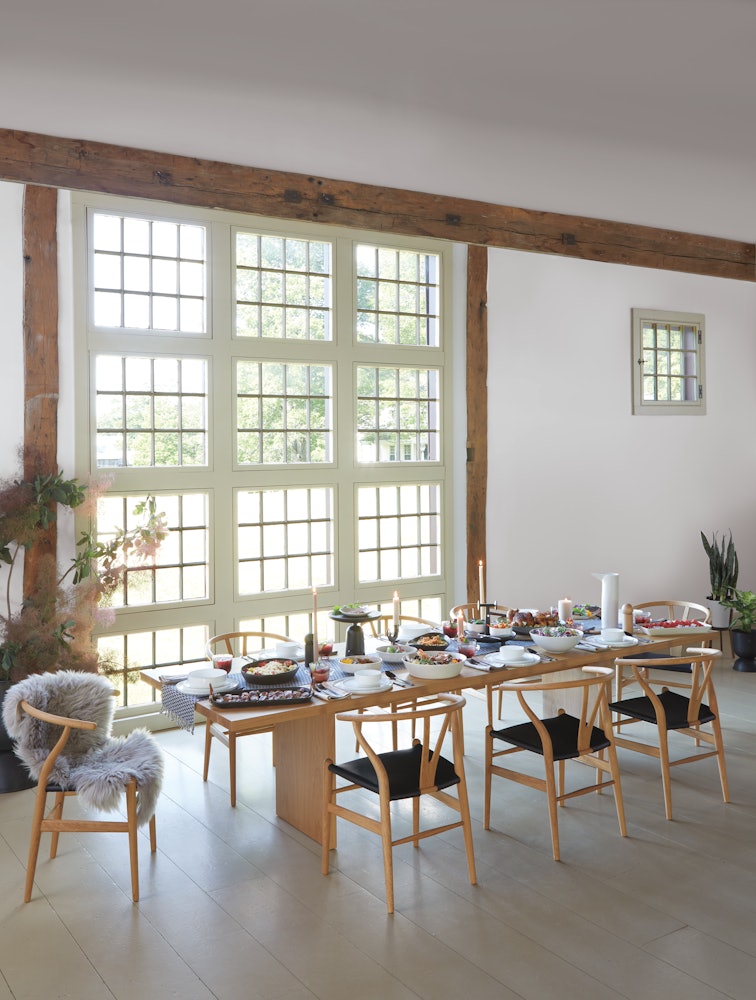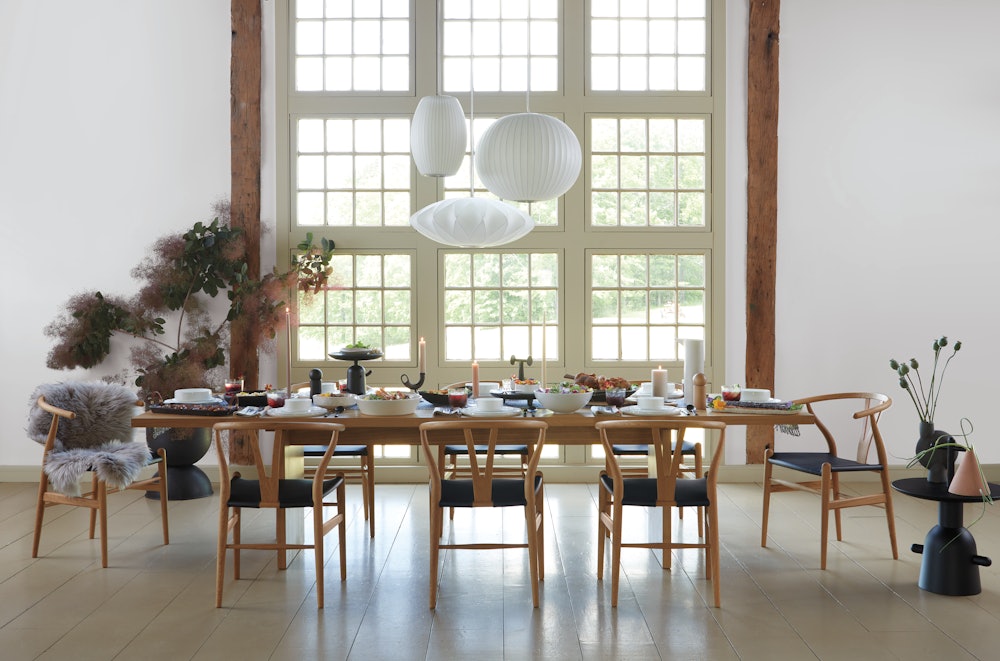Wishbone Chair with Leather Seat
Wishbone Chair with Leather Seat
Shipping + Delivery
Easy Returns
Not satisfied? Return items within 30 days. Learn More
Design Concierge
Need help designing your space? Learn more about our complimentary interior design services
Authenticity Guaranteed
This is an original, authenticated product.
Warranty
1-year warranty
Terms and conditions apply. Learn more
Details
- Perfect for the dining room, living room, or office.
- Rare leather seat version, a DWR Exclusive.
- Sculptural solid wood frame with wraparound backrest and arm support.
- This is the authentic Wishbone Chair from Carl Hansen & Søn.
- Made in Denmark.
- Measure for a perfect fit with our delivery guide: https://www.dwr.com/furniture-delivery-guide.html
- Brand
- Carl Hansen & Søn
- Collection
- Wishbone Collection
- General Dimensions
-
- 29¼" H 21¾" W 19¾" D
- Assembly
- Comes fully assembled
- Warranty
-
1-year warranty
Terms and conditions apply. Learn more
CH24 Wishbone Chair
- Height (in): 29¼
- Width (in): 21¾
- Depth (in): 19¾
- Seat Height (in): 17¾
- Solid oak or walnut frame
- Loke leather: a buffed, embossed ox hide with a protective coating
- Notification of Filling Contents

Hans Wegner
Hans Wegner stands among designers Finn Juhl, Arne Jacobsen, Børge Mogensen, Poul Kjærholm and Verner Panton as a master of 20th-century Danish modernism. More specifically, he was instrumental in developing a body of work known as organic functionalism. His early training included both carpentry and architecture.
More on Hans Wegner




























